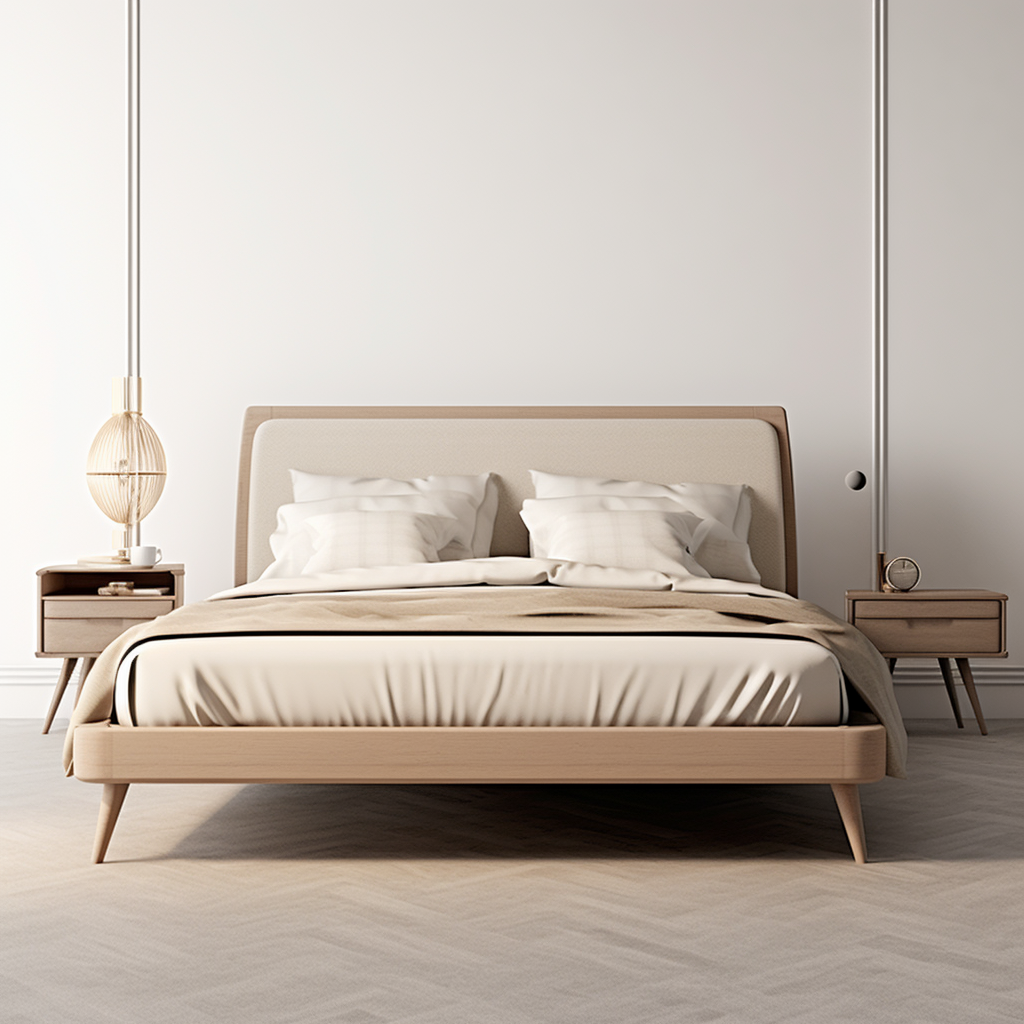Thread count measures the number of threads woven into a square inch of fabric. The right thread count creates an optimal balance of softness, breathability and durability in bed sheets. This detailed guide reviews how thread counts impact sheet performance along with recommendations for different materials.
Table of Contents
ToggleHow Does Thread Count Affect Sheet Quality?
Higher thread counts tend to increase certain sheet characteristics:
- Enhanced softness from more compact woven fibers
- Added durability from higher density and tighter construction
- Improved strength resists ripping or tearing
But excessive thread counts can also decrease:
- Breathability as the weave becomes too tight for airflow
- Texture with some loss of crispness and definition
- Quality due to reliance on shortcuts like multi-ply yarns
Finding the ideal range improves sheet performance while avoiding the downsides of inflating thread counts simply for marketing appeal.
Thread Count Sweet Spots by Material
Cotton Sheets
- 200-400 – Ideal for most cotton sheets. Provides optimal softness, breathability and strength.
- Under 200 – Too loose with potential durability issues unless lightweight percale.
- 400-600 – Improves softness incrementally but breathability can decline. Quality maximized around 500.
- Over 600 – Excessively dense. Reduced airflow and durability. Often misleading inflated numbers.
Bamboo Sheets
- 300-500 – Ideal range for optimal softness, moisture wicking, breathability and durability.
- Under 300 – Lacks strength andydkd durability. Lower quality and pilling.
- Over 500 – May indicate inflation or multi-ply yarns that decrease quality.
Silk Sheets
- 300-600 – Provides the best balance of softness, breathability and longevity. Improves with washing.
- Under 300 – Subpar strength and durability. Less softness.
- Over 600 – Heavier silk but breathability suffers without added benefits. Durability issues.
Linen Sheets
- 150-300 – Ideal range for softness, breathability and strength for most linen sheets.
- Under 150 – Increased pilling and roughness. Wears faster.
- Over 300 – Excessive density harms airflow and softness. Over-engineered.
Flannel Sheets
- 150-170 – Maintains light and airy warmth. Prevents stiffness.
- 180-220 – Ideal for balanced softness, breathability and insulation.
- Over 220 – Heavier but can become overly warm with decreased airflow.
Percale Cotton Sheets Buying Guide
Pros
- Breathable, lightweight and crisp
- Durable, rip-resistant and low pilling
- Maintains shape and fit over time
- Naturally temperature regulating
- Improves with washing and age
- Affordable easy care option
Cons
- Wrinkles easily
- Can be noisy or papery sounding
- Requires more frequent ironing
- Lacks ultra-soft feel of other cottons
- Tight weave less stretchy or flexible
Best Thread Count Range
200-400. Higher permits breathability. 180-200 acceptable if buying 100% cotton single ply yarns.
Sateen Cotton Sheets Buying Guide
Pros
- Ultra plush, satin-like texture
- Smooth and shiny appearance
- Resists wrinkling and clumping
- Warmer weight helps insulate in winter
Cons
- Lacks crispness of percale
- Less breathable at very high densities
- More likely to snag or pull with use
- Shows stains more than matte finishes
Best Thread Count Range
300-600. Up to 800 acceptable if 100% cotton in single ply yarns.
Bamboo Sheets Buying Guide
Pros
- Incredibly soft, smooth feel
- Thermoregulating and moisture-wicking
- Antimicrobial and resistant to odors
- Durable and maintains shape
- Eco-friendly sustainable material
Cons
- Needs extra care to preserve softness
- Lower quality versions pill excessively
- Can shrink if poorly produced
- Synthetics less breathable than pure bamboo
Best Thread Count Range
300-500. Density maximizes softness and moisture wicking.
Silk Sheet Buying Guide
Pros
- Extremely soft, lightweight warmth
- Hypoallergenic and calming on skin
- Breathable and temperature regulating
- Naturally repels dust mites and allergens
- Very durable yet becomes softer over time
Cons
- Expensive investment
- Requires extensive care
- Difficult to remove stains
- Wrinkles easily without ironing
- Catching and snagging risks holes
Best Thread Count Range
300-600. Improves softness, drape and durability.
Linen Sheet Buying Guide
Pros
- Very breathable, releases heat rapidly
- Durable, rip-resistant and wears beautifully
- Absorbs moisture, dries quickly
- Antimicrobial, resists dust mites
- Relaxed texture maintained over time
Cons
- Requires significant ironing
- Difficult to remove wrinkles entirely
- Can lack extremely soft feel
- Takes time to break in when new
Best Thread Count Range
150-300. Lighter density maximizes linen’s natural breathability.
Flannel Sheet Buying Guide
Pros
- Ultra-soft, plush, cozy texture
- Warmth without heavyweight
- Breathable with loose weave
- Adds comfort in cold weather
- Improves with washing over time
Cons
- Can shrink substantially if poorly pre-shrunk
- Light colors show dirt easily
- Warmer for summer or hot sleepers
- Pills with lower quality versions
Best Thread Count Range
160-220. Maintains fluffy feel without over-engineering.
Sheet Buying Tips
- Focus on quality of materials over inflated thread counts
- Seek out true single ply yarns
- Compare thread counts between materials not just brands
- Prioritize reasonable thread counts for optimal sheet performance
- Verify certifications like OEKO-TEX for chemical safety
- Check return policies in case sizing or feel disappoints
Finding your perfect sheet comes down to the right materials, construction and reasonable thread counts suited to your priorities like softness, durability or breathability.
Signs Your Sheets May Be Low Quality
- Excessive pilling, fraying, loose threads after a couple washes
- Thin, flimsy feel lacking density or crispness for the material
- Fit stretching out quickly, failing to stay secured on mattress
- Ripping or tearing easily with minimal snagging
- Significant shrinkage after washing despite following care instructions
- Rough texture lacking smoothness and softness
While a very high thread count doesn’t necessarily confer quality, too low of a thread count often correlates with poor sheet construction and materials.
When to Replace Old Bed Sheets
It’s time to upgrade sheets if they:
- Appear overly worn, discolored, thinning or torn
- Fit loosely without securing correctly to the mattress
- Cause discomfort against the skin from roughness
- Retain odors even after washing and disinfecting
- Have excessive pilling or pulls that cannot be removed
- No longer provide desired properties like cooling or softness
Investing in new high quality sheets promotes comfort and hygiene for better sleep.
Troubleshooting Common Sheeting Issues
Wrinkling: Use liquid detergents, wash in cold water, reduce dryer time, line dry
Pilling: Choose pilling-resistant fabrics like percale, use a fabric shaver, wash gently
Shrinking: Pre-wash in hot water, line dry, follow size charts carefully
Baggy Fit: Buy sheet sets together, measure mattress height, use deep pockets
Residual Odors: Add white vinegar or baking soda to wash, air dry in sun, replace
Analyzing when and where issues arise guides appropriate solutions.
Frequently Asked Questions About Thread Counts
What is the best thread count for sheets?
The ideal thread count varies based on the sheet material used. For cotton look for 200-500. Bamboo 300-500. Silk 300-600. Linen 150-300. Flannel 160-220.
Does a higher thread count mean better quality?
Up to around 400-500 thread count does signal better sheet quality. But excessively high counts over 600 can decrease breathability without added benefits for most materials.
What thread count indicates luxury sheets?
For cotton, 500-600 thread count with true extra-long staple Egyptian or Pima cotton signifies luxury. Bamboo around 400-500 count is optimum. Silk upwards of 400 thread count becomes indulgent.
Are single ply or double ply sheets better?
Single ply sheets made with one finer thread per string make for a softer, more consistent quality fabric. Double ply using two twisted threads can lack softness and breathe poorly.
Why are thread counts inconsistent between brands?
Lack of regulation and testing. Some brands inflate numbers by counting plies rather than threads. Comparing materials rather than relying solely on thread count is most reliable.
Closing Summary
Understanding how thread count impacts the characteristics of different sheet fabrics empowers you to make informed buying decisions suited to your priorities. Seek out reasonable, non-inflated thread counts best suited to the breathability, softness, and durability needs of each unique material. Sweet dreams!
Originally posted on September 18, 2023 @ 9:36 pm
Author
-

Dr. Barry Jarvis is a renowned sleep specialist, dedicating their illustrious career to the intricate world of sleep medicine. Holding a medical degree from a prestigious institution, Dr. Jarvis has cultivated a deep understanding of the complex mechanisms that govern sleep and its pivotal role in overall health and well-being. With a compassionate approach and a meticulous eye for detail, Dr. Jarvis has helped countless individuals reclaim restful nights and vibrant days. Beyond their clinical expertise, they have contributed to groundbreaking research in sleep medicine, unraveling the mysteries of sleep disorders and pioneering innovative treatments that stand at the forefront of the field.
Tags: SheetsThread Count
Dr. Barry Jarvis
Dr. Barry Jarvis is a renowned sleep specialist, dedicating their illustrious career to the intricate world of sleep medicine. Holding a medical degree from a prestigious institution, Dr. Jarvis has cultivated a deep understanding of the complex mechanisms that govern sleep and its pivotal role in overall health and well-being. With a compassionate approach and a meticulous eye for detail, Dr. Jarvis has helped countless individuals reclaim restful nights and vibrant days. Beyond their clinical expertise, they have contributed to groundbreaking research in sleep medicine, unraveling the mysteries of sleep disorders and pioneering innovative treatments that stand at the forefront of the field.









